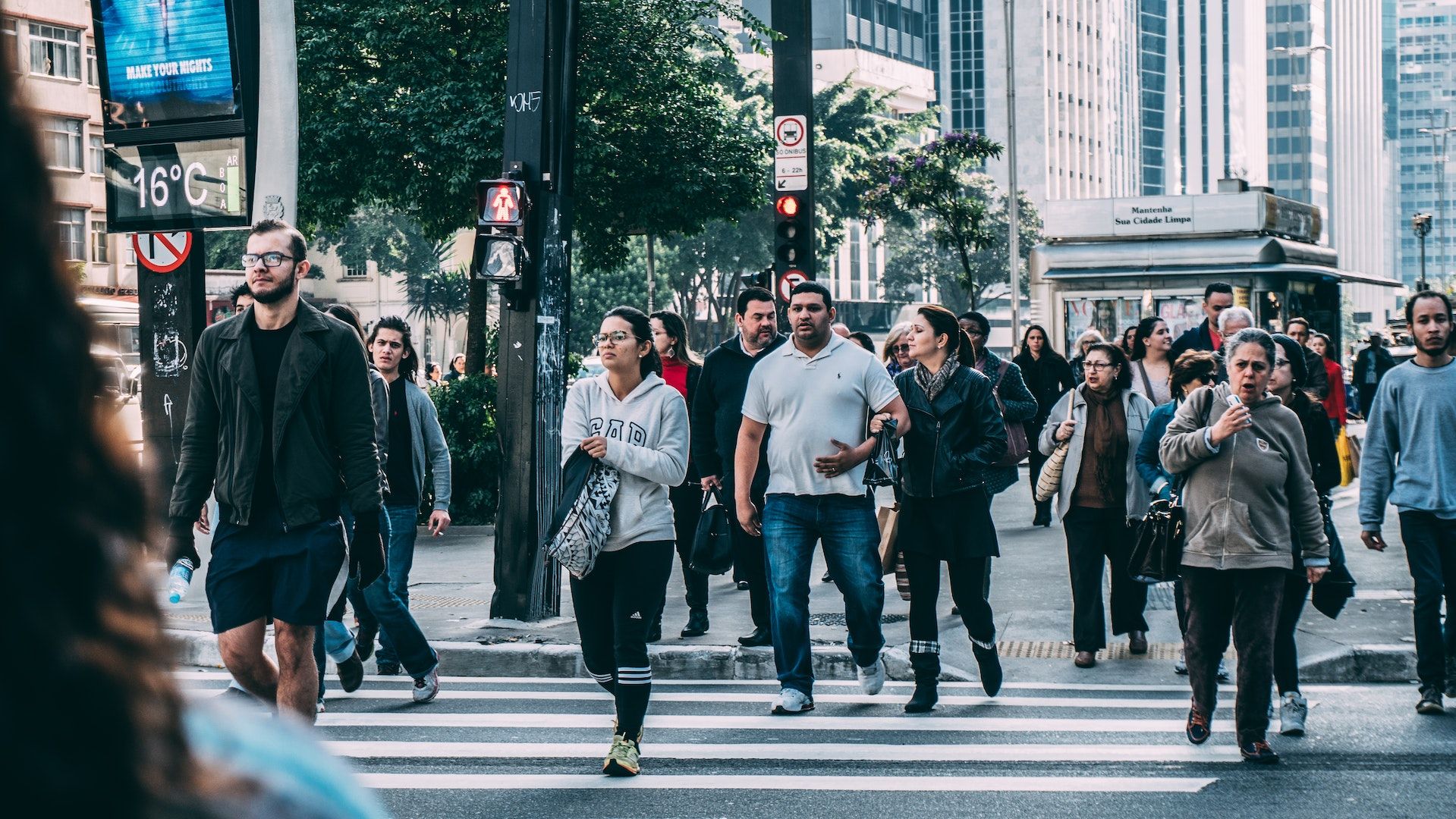
Demystifying Minority Stress Theory and Its Impact on Mental Health
Most people are familiar with the “angry Black man/woman” stereotype that’s often showcased in movies, TV shows, music, and even the nightly news. This trope has far-reaching effects and portrays Black people as perpetually and irrationally angry at the world. As a result, this image works to silence and shame those who dare to challenge a status quo that sees them as second-class citizens. It also trivializes the genuine distress Black people experience as a result of various prejudice and discriminatory acts.
This pent-up frustration and stress manifested into high blood pressure, depression, anxiety, and other health problems.
The minority stress theory studies these pervasive social conditions to better understand their impact on racial, ethnic, and gender minorities. But in recognition of National Minority Mental Health Awareness Month, this blog will do a deep dive into the minority stress theory as it relates to people of color within the United States.
What is Minority Stress Theory?
The minority stress theory works to understand the high levels of stress faced by members of stigmatized minority groups due to a variety of unique factors like societal stigma, expressions of violence, interpersonal prejudice and discrimination, poor/ nonexistent social support, a low socioeconomic status, and much more. The theory provides a framework for understanding the unique stressors and challenges marginalized people face, as well as its impact on their mental and physical well-being.
Two components, distal and proximal stressors, play a foundational role in understanding the minority stress theory.
Distal vs. Proximal Stressors
Distal stressors are usually external factors that create an oppressive environment for members of marginalized groups. These stressors include all experiences of discrimination, prejudice, violence, stigmatization, and all other broader forms of social inequalities and systemic forms of oppression. It’s important to note that distal stressors are rooted in societal attitudes and constructs that disenfranchise racial and ethnic minority groups.
For example, Black mothers are three times more likely to die from a pregnancy-related cause than white women. Black mothers are frequently undervalued and aren’t monitored as carefully as their white counterparts. And many distal stressors contribute to this issue like structural racism, implicit bias, and other social determinants that negatively impact Black maternal health.
Proximal stressors, on the other hand, describe the more internalized processes and experiences that members from marginalized groups deal with due to the distal stressors they face.
Proximal stressors can be divided into two main groups: interactive proximal stressors and internalized proximal stressors.
1. Interactive proximal stressors:
These stressors describe the anticipation or expectation that external stressors may occur and the vigilance a person must maintain to protect themselves from these external stressors.
As a Black man in America, I can’t help but identify specifically with the idea of interactive proximal stressors within my everyday life. For example, a previous employer of mine would host dinner parties once a month at the homes of different leadership team members.
One month we were asked to visit the home of our Head of Sales, who lived outside of the city. Driving into the neighborhood, I had trouble finding the right home and pulled over to double-check that I was at the correct address. While sitting in my car, I noticed two neighborhood residents staring directly at me with a cold, stern glare.
I came to the quick conclusion that they likely saw me as a criminal who was up to no good and came to their neighborhood to commit a crime. Despite still not knowing where to go, I put my car into drive and went along my way. Hoping that I’d come across the correct house sooner or later.
For reference, this happened in a rural town on the outskirts of Georgia. These areas are known for harboring animosities that led to the murder of Ahmaud Arbery and for upholding anti-black rhetoric. As you could imagine, I wasn’t too keen on sticking around to figure out why those folks were staring at me so intently.
This vigilance I had to practice is just one example of how interactive proximal stressors can make their way into someone's life. It also exhibits the minority stress theory in a way that often stays on the minds of Black people (especially Black men) nationwide.
2. Internalized proximal stressors:
These represent a person’s internalization of the negative attitudes, stereotypes, and prejudice their group faces from society. This can manifest in many ways, including expectations of rejection and identity concealment.
For example, a Latinx immigrant living in the United States may experience internal shame due to the rise of anti-immigrant rhetoric in the media. This internalized shame can grow to make them anxious/ depressed whenever they come across similar types of messaging in the media or in their daily life.
I’ve also experienced internalized proximal stressors in my own life, particularly identity concealment. When I started my career, I was always a bit self-conscious during social outings with coworkers. Being the only non-white person on the team sometimes made me feel like I had to put on a disguise to fit in. When I’d be asked about my hobbies, musical tastes, thoughts on current events, etc. I often felt like I should conceal my views and opinions to a degree to avoid living up to any preconceived notions of who they thought I was.
Now, I understand this was a waste of energy and that I should always show up as my authentic self. But back then, my lack of professional experience manifested itself in presenting a false version of who I was in an effort to fit in. Unfortunately, my story may be a too familiar storyline for members of marginalized groups.
Before I move on, I should clarify that interactive and internalized proximal stressors aren’t necessarily directly observable but are often referenced as stressful situations for marginalized people.
Minimization of Racial Microaggressions and its Effect on Minority Mental health
Racial microaggressions can be defined as “brief and commonplace daily verbal, behavioral, and environmental indignities, whether intentional or unintentional, that communicate hostile, derogatory, negative racial slights and insults to the target person or group”.
Psychologist Derald Wing Sue defines microaggressions as the “everyday slights, indignities, insults, putdowns, and invalidations” that members of marginalized groups face regularly. It’s important to specify that microaggressions can be unintentional and unconscious but can still negatively impact the mental, physical, and emotional health of minority groups. Microaggressions contribute to stress that can lead to higher blood pressure, increased heart rate, and has been linked to heart disease in Black people.
These microaggressions can be divided into three main groups:
1. Microassaults:
This is the most overt type of microaggression and can come in verbal or behavioral insults or slight. For example, a recent survey found that 1 in 3 Asian Americans reported being told "go back to your country." This comment represents a clear situation of a microassault occurring.
2. Microinsults:
These represent subtle snubs or communications that convey rudeness, insensitivity and demean someone’s racial heritage or identity. Microinsults convey a hidden insulting message to the marginalized person they’re attacking. Examples include assuming an employee of color got their job due to affirmative action or to fill a quota, or presuming they’re in a junior role.
3. Microinvalidation:
Behaviors or verbal comments that exclude, negate, or nullify the thoughts, feelings, or realities of marginalized groups. Examples include complimenting a person of color for speaking good English, despite them being born and raised in the United States. Or invalidating the experience of an Asian American explaining an instance where they experienced racism.
“The power of racial microaggressions lies in their invisibility to the perpetrator and, oftentimes, the recipient.” - Derald Wing Sue
People generally see themselves as being morally good and assume they’d never engage in discriminatory actions or behavior, which makes it hard to address the topic of microaggressions. Conversely, people of color are often left with a vague feeling that they’ve been impacted by a microaggression, which creates a psychological dilemma for both the perpetrator and the victim.
Personal Resilience in the Face of Minority Stress
In the face of minority stress, personal resilience can be defined as a “self-healing process through which minority individuals attempt to construct and reconstruct themselves in a way that minimizes damage from injurious social relations”.
And resilience has played a significant role in helping people of color survive and thrive in environments where they face varying levels of stress and aggression. Though, it’s critical to point out that resilience isn’t the same as coping. For reference, “coping refers to an individual’s way of dealing with challenges, whereas resilience refers to their successful adaptation, which might include an effective coping strategy as well”.
Resilience in the face of minority stress comes in many forms, but for the sake of this piece, we’ll focus on two: ethnic identity and critical consciousness.
Ethnic identity
Ethnic identity is loosely defined as the degree to which someone has a sense of belonging and attachment to their ethnic group. Having a strong, positive relationship with your ethnic identity serves as an effective buffer when experiencing forms of prejudice or discrimination.
For example, a study found that Black college students with higher levels of ethnic identity were less likely to engage in hard liquor/beer use, wine use, and marijuana use than their counterparts with lower levels of ethnic identity. This proves that high levels of ethnic identity worked as a healthy barrier to dealing with prejudice versus abusing substances like alcohol and marijuana.
Critical Consciousness
Critical consciousness entails understanding how to perceive existing social, political, and economic contradictions, and how to take action against the oppressive aspects of this reality. In short, building a more nuanced understanding of the social conditions that marginalized people live with helps them become less constrained by these social conditions.
That’s because people with high levels of critical consciousness are better equipped to recognize various systems of disadvantage within society and fight inequalities by engaging in social justice initiatives that can improve any particular injustice they may be facing. These individuals are also associated with better overall mental health, healthier sexual choices, lower rates of substance abuse, and better employment opportunities in adulthood.
Conversely, those with low levels of critical consciousness are prone to failing to recognize systems of disadvantage, ignore or minimize underlying racism or inequity, lack interest or feel powerless to confront discriminatory systems, will avoid discussing or acknowledging the issue, or will ultimately blame the victims of oppression instead of holding the systems accountable.
Alma can help marginalized people overcome pent up stress and frustration
No one deserves to live with unfair treatment or the stress that comes with it. We’ve made great strides in the fight for equality, but much progress still needs to be made.
Alma is here to support all marginalized people who feel like they have nowhere to turn or no one to speak with.
Alma’s provider directory makes it easy to filter therapists by their race, gender, sexuality, and more, so people can easily find the care that’s best suited for them. Click our link here to get started.
- Alma clients who use insurance save an average of 77% on therapy
- 96% of therapists at Alma take insurance
- Alma works with Aetna, Cigna, UnitedHealthcare and more
Jul 27, 2023

Looking for a therapist?
Get tips on finding a therapist who gets you.
By submitting this form, you are agreeing to Alma's privacy policy.




